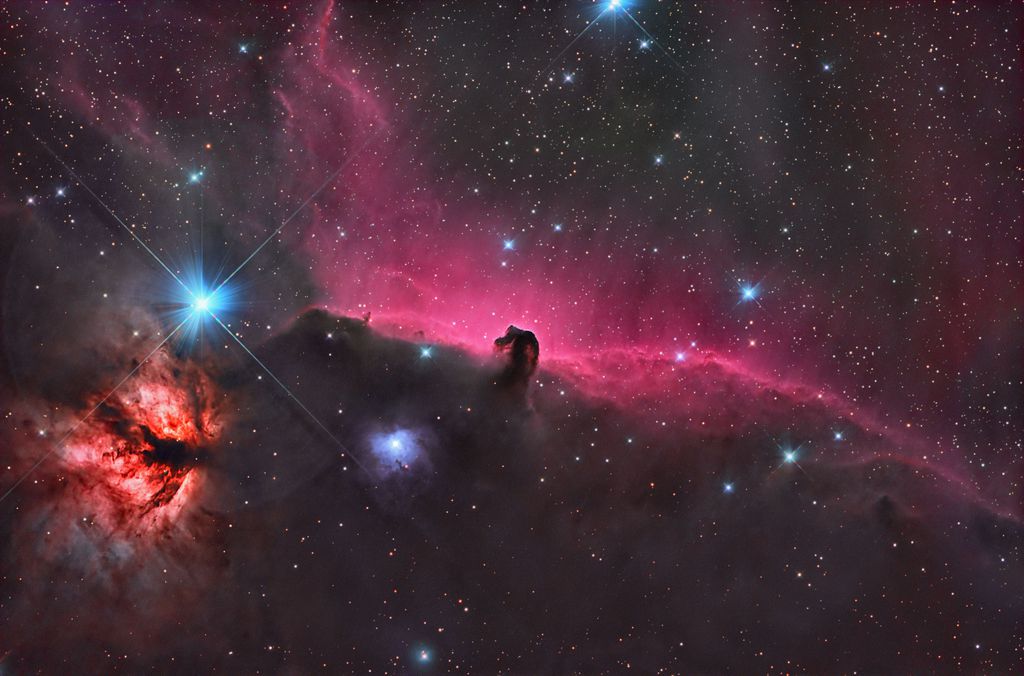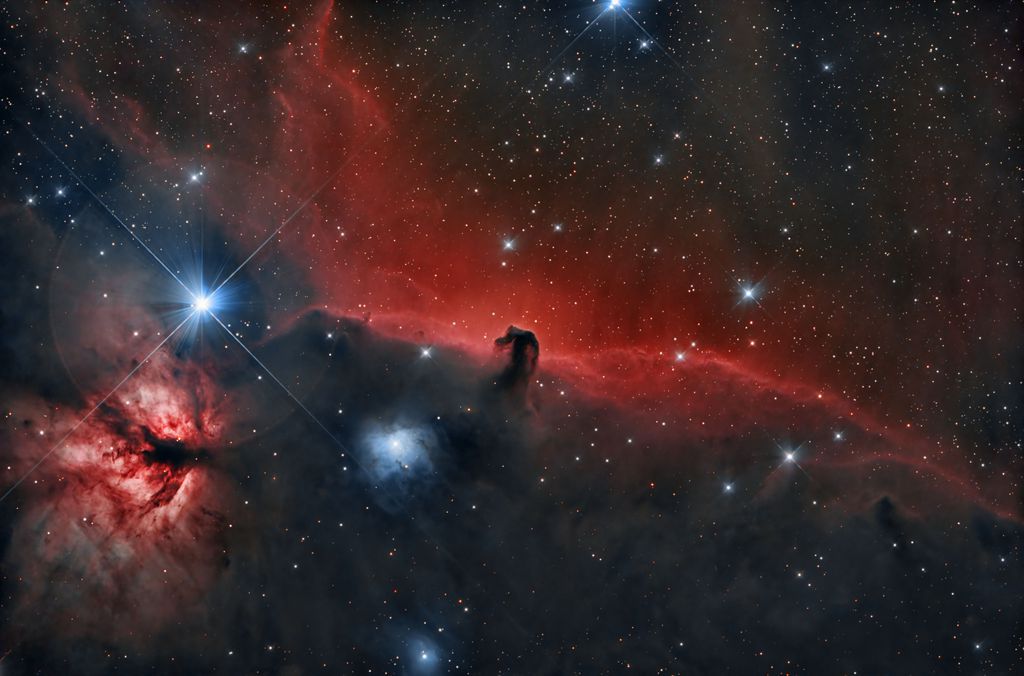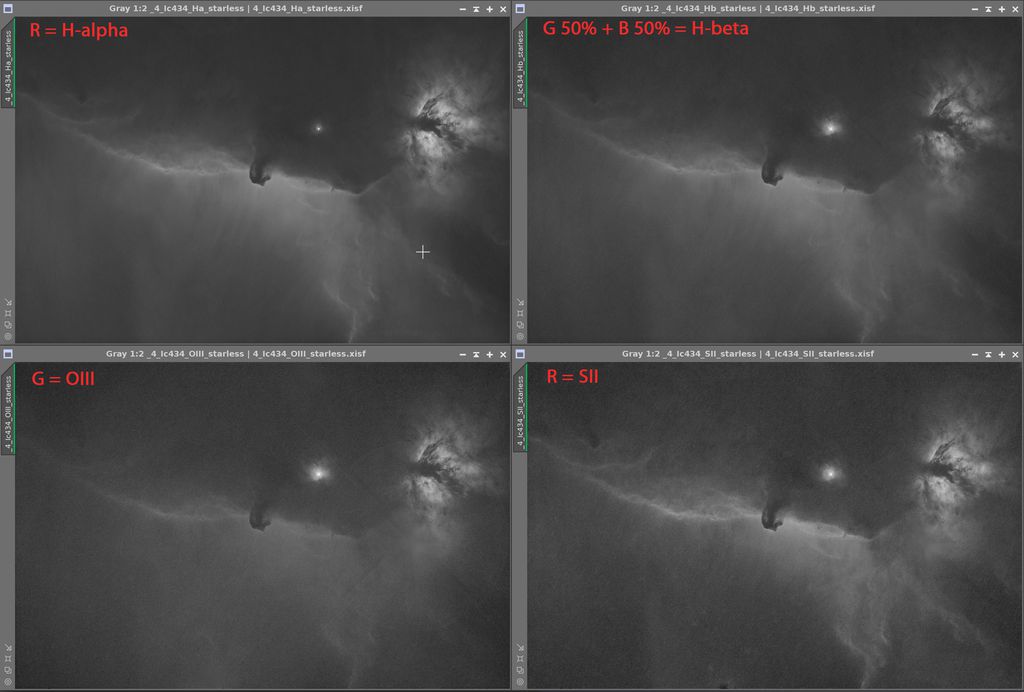Hello everyone,
I've recently added to my Newton 20cm f/4 + ASI2600MC a filter wheel with two 5nm Antlia Dual Band filters, one Ha-OIII and one Hb-SII. Another slot of the FW has an old IDAS LPS-2 (light pollution suppression).
The idea is to acquire a OSC RGB (the LPS filter) and the four bands H-alpha, OIII, H-beta and SII through the two OSC narrowband filters. The RGB is then processed as stand alone and the narrowbands OSCs are split in four monos and then recombined into an aesthetically pleasing image, highlightimg the different emissions and eventually combined with the RGB image (ie, for the stars, color balacing, etc...).
The target image is Ngc2024 (Flame nebula) and Ic434. Nicely framed by the OTA, there are emission nebulae, reflection nebulae, dark structures and bright stars to test anti halo coatings of the filters. Overall the objects are bright in each narrowbands (each filter was exposed with 1 hour integration).
Here are my tests (see below images). I'd like to hear from anybody who has been using similar approaches with these filters and OSC cameras. Basically, the issue is how to best combine into an RGB image the narrowband data either as single mono frames or as OSC. Comments welcomed! Thanks Stefano.
This is an Ha (as Red) HbOIII (Green) HbOIII (Blue) pixel math combination plus RGB stars:

This is an SHO combination plus RGB at 50% with RGB stars using NBRGB combination script

This is just the LPS image.

By splitting the RGB channels of the two dual bands, I created these mono images assuming: 1) H-alpha is only the RED channel of the Ha.OIII dual band, 2) OIII is the GREEN channel of the Ha.OIII dual band, 3) H-beta is a 50-50 blend of the GREEN and BLUE channels of the Hb.SII dual band, 4) SII is the RED channel of the Hb.SII dual band. Monos below are just scren stretched and were combined with different palettes/scripts to get the above images. Of course, by splitting a dual band OSC into the single narrow bands we don't get a "pure" narrow band signal as if shooting with mono cameras and dedicated filters, but the tecnique has the advantage of reducing the overall exposure times.
 |







